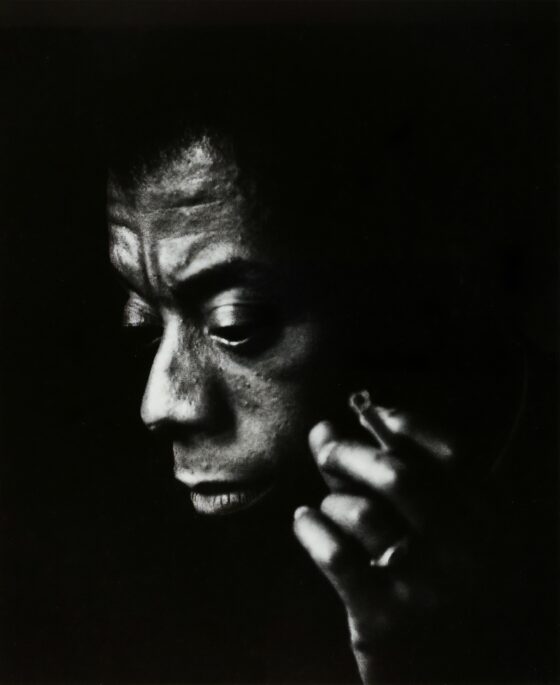
Molly McCully Brown writes that all bodies know they have a home inside of them. Birds can fly thousands of miles and land in the exact same pond that they left the previous season. Humans still don’t understand how this is feasible. It’s not so easy for us to demonstrate Brown’s truth. When I woke up on the first morning after moving into my new apartment, I heard birds through my front window, and I knew I was home.
After college, I moved to a town in Montana with a grocery store, a running trail, and three bars. There was no stoplight and the library had only ten bookcases in it, but it was only a twenty-minute drive to my job, and I’d found a cheap studio apartment there with looming purple lilac trees outside of it.
I took a job working at a group home for at-risk foster youths. I cooked their meals, I helped with homework. If they asked me to play basketball, I needed a withstanding reason to say no. When I gave the children “behavioral checks,” they called me a cunt, and I was expected to take a deep breath and suggest that they “take some space.” This might have been a solution, if they felt it were possible in a place where their phone calls were monitored, their closets randomly searched.
“You eat dinner together?” I asked another youth counselor on my first day.
“Yep, like one big family,” she assured me, or herself, or the children sitting around the kitchen table.
I frowned because I’d never seen a family lock cleaning supplies behind steel padlocks or confiscate shaving cream, perfume, or mechanical pencils with their extra sharp lead. I think most homes don’t have boundaries drawn on the floor telling children where they can or cannot go.
I’d lived there only two months when one morning my then-boyfriend, now-husband picked me up for an event in the city where he lived. We stopped at a café for breakfast before leaving town, and our omelets came deflated and muted yellow. We doused them in green hot sauce, but they still tasted like paper and oil and faintly of the bitter mushrooms inside.
“We’re certainly never getting breakfast again in your hometown,” he said when we left still hungry, and his words made me stop in the parking lot, mid-stride. I had not felt like I’d had a “hometown” since my first and second childhood houses. There, when I was still young enough to run around the yards in my light-up sneakers, pretending I was a safari guide or a pirate. There, where I swung upside down from tree branches and let pink and white circus animal cookies melt in my mouth. No one could laugh at me if I played in my yard, and if I ran out of cookies, I could always get more from the kitchen. Home was a place of assurance, devoid of self-consciousness or danger.
These are all preposterous, illogical ideas that we wrap around ourselves as children, then cast off when we are somehow not anymore. These are all precisely the feelings we spend our adulthoods trying to find again.
Home is not only a structure or location, but an objective, as in: to make it to home plate, which sometime means sliding across the ground, breaking skin, and bloodying the body. Sometimes we injure ourselves so irreparably in this pursuit of home that when we get there, we can’t get up. There was a time when we fell, self-induced, into this understanding of home, or rather, we knew it was without limits and so we let it fall into us and let it beat out from our chests: this is yours, this is yours, this is yours.
When I compare myself to the children at the group home—and they are children; when staff tells them that this is their home, they roll their eyes because though they never had unlimited circus animal cookies, they know that to be home is to be unguarded, which of course isn’t allowed here—I suppose I do have a hometown. If I think of a home as nothing more than a place defined by the rules that I give it, then this might be true. But it doesn’t feel this simple. This home, this idea, is too malleable and shifts from mist to rain to ice that threatens to immobilize my limbs if I press it to myself for too long.
When we were children, we did not ask, “What is home?” but instead, “Can we go home?” because, despite everything we could not depend on when we were told to pick up and fly from nest to nest at any time, we knew that a real home followed us. We once knew this like we knew the sun would come up. We knew this before we learned about smog or global dimming, before we knew how some things on which we depended could be so irreparably influenced. Before we were so influenced.
There’s a quote from Giovanni’s Room that has followed me since I read it. I like to think that it has stuck to me because, as a writer and a scholar, I am inclined to remember, to mull-over, to make mental cider of intellectual claims about the idea of home until I understand them myself. But I wonder if it’s more likely that as I grow older, I am chasing more and more fervently this feeling of sweet frosting in my mouth, of an understood forthrightness.
“Perhaps home is not a place,” Baldwin’s character, David, thinks, “but simply an irrevocable condition.”
When I look up the word “irrevocable,” I find that the word is most commonly used in legal situations. But it also pertains to decisions that we make and how sometimes those decisions commit us absolutely to something, and this binding too is irrevocable. We control what we are bound to, and therefore the irrevocable quality of home is not something we must accept unequivocally. There is, let us not forget, a second part of Baldwin’s home assertion: condition. In other words, a circumstance, which is inherently always shifting.

Lincoln Logs have been “America’s National Toy” since 1916, which means that for over a hundred years, they have taught young children that homes begin with a foundation and four walls and that if you don’t give them a defined structure, they will fall down with your tiny people inside. They are perhaps the first to blame in teaching children that they are wrong to think a home can be anything but rigid. In the toy’s instructional diagrams, there is nothing that reads, “What you build will affect who you put inside of it,” though this lesson is unavoidable.
When I was young, my mother covered our home’s walls with pictures of me and my two siblings. She took so many, so fervently, that sometimes we would stop at Longs Drugs just to check the photo counter for any pickups she might have forgotten. More often than not, there were orders waiting for us. I can still smell the crisp, slightly anesthetic envelopes of newly developed photographs as I held them in my lap on the way home. Now, it’s difficult to think there wasn’t a kind of desperation to my mother’s photography habit. Deep down she knew that our years were not finite. One day she would not be with us to ensure that our home’s walls were covered in documentation that proved we had a childhood in which we smiled. This, to my mother, is the job of a home. It holds memories for us in an evidential way.
My husband is a few years older than me and already had two young children when I met him, and when he took me back to his home for the first time, I warned him that I am nosy. Which is to say that I have been doing this studying of homes before I was conscious of what I might uproot.
“You don’t have any pictures on your walls,” I said to him, and this surprised me more than it did him. This was not the only thing I’d noticed, but it was the most unavoidable. I couldn’t stop staring at his walls. Without recognizing it until that moment, I’d identified the concept of “home” with 5×7- and collage-covered walls.
“You’ve hung up all your kids’ art, though,” I said, thinking that this might sound like an acceptable alternative. It is not the same, but what does it mean to have a home with walls lined entirely, with a biological protectiveness to it—a tissue lining, a cage of bones around a heart—with photographs? What does it mean to live in a home with marker sketches of Pokémon, a single faded photo stuck to the fridge, a magnet covering faces?
I’m not claiming that one is superior to the other. But it matters. This act of construction and trust in the assembly of our homes around us—it goes without saying that we will do this again and again. We never outgrow Lincoln Logs. This construction is inherent to our own humanity, and it matters what we make our homes’ walls of. It matters what we believe will hold them up.

“I can’t give you much anymore,” my mother said to me when I graduated college and she helped me drive a U-Haul from Maine to Montana. She gave me a stack of photographs of me and my siblings as children. “But I can give you pictures. And when I die, you know this already, they’re all yours.”
My mother is struggling with accepting that she is not embedded in my adult life. She exists on the periphery, and this is difficult for her. She is not part of my home. When my older sister was alive, my mother used to say to her, “If anything happens, I’ll just come live with you.” She kept the spare bedroom in the basement of her house clean for our mother. She kept the linens white and the walls purple because my mother loved it this way.
I have no spare bedroom for my mother, and she knows this.
“I am learning to leave my babies on the pond. Like the loons,” she said to me. In the photos she gave to me, the three of us children are happy. We are young, still living in her home, we are still hers, and the pictures confirm this for her in infinite duplicity. I think she hopes that I will hang them around my apartment. I will do what she has shown me as the way of making a home: Protect yourself with photographs of the past. Cling to them. Tell yourself that this happier past is all you have and cover the walls so that emptiness can’t remind you that there could be more.
I ration the photos she gives to me and only frame two of them, leaving room for other photos that I plan to take later. I prop them on my bookcases instead of lining my walls the way she did. The idea of this uniformly grieving aesthetic is suffocating.
I told her I would send her pictures of my apartment once it was decorated, but I didn’t because I knew that she’d notice this absence. I knew that if she could, she would drain the pond of its water and fill it instead with photographs of a time when her home was her children and she was her children’s home; she would surround her adult babies with this past, hoping that one day they would remember and that they too would think there was nothing so precious as a home dedicated to memorialization.
On Saturdays at the foster home, we made the children do a “deep clean” that concluded with an inspection of their rooms. The first time I did this, I almost didn’t make it inside the sixteen-year-old boy’s room. I was stunned and reminded myself that he could see me frozen in the doorway with my mouth parted, and I shut my mouth and looked at the list in my hand to see what I was supposed to check off.
He had three pairs of shoes lined up along the wall. There were more empty hangers than shirts in his closet. His desk was the size of one of my dining chairs, and his pillow was collapsed into a deformed trapezoid in the corner of his bed. I’d never seen so little in a room. I checked off that he’d made his bed and dusted his windowsill, though the windowsill I wasn’t sure of because I didn’t cross the room to the white frame and the straight, cheap blinds to see. This examination would have been humiliating, and to swipe my finger across his emptiness and tell him that it was not only absent of so much but that it was also dirty would be to magnify this boy and burn at his skin with the sun. He hardly ever smiled, but when he did it made him look young, like someone who had always believed in a home, and I think that this made him feel small.
He’d carved something into his desk. He must have gouged each letter with a pen point, over and over. It must have taken him weeks, maybe months, to get the words deep enough to stay without the use of a knife or scissors. We locked both away from the children in a basket in the pantry and called them “sharps.”
There were no photos on his walls, on his desk, taped to the back of his door. When I asked him, “If you could go anywhere in the world right now, where would you go?” he often answered, “Anywhere but here.” This is a common enough answer for someone of his age, for someone who feels more than anything else contained and misunderstood, but it also points toward the idea that wherever he lands, there will be the possibility of home. It tells me that somewhere between his age and mine, we begin to lose more quickly this assurance that home is internal first.
My mother once described the woman who lived outside of her college apartment in San Francisco as “loitering.” She used to bring her food but not money because she didn’t trust her with its freedom. The woman’s story ends with my mother marrying my father and moving to a two-bedroom house in the suburbs of Benicia because this, not the city riddled with people who could not be trusted around child hands and clean pastel blankets and infants who are so easily impressed upon, was the place to build a home.
I don’t know when this happens, when we turn this idea of a home into a weapon to be wielded: a judgment, a baseline standard which, if not met, is used to delineate between the human and the inhuman. This too seems inextricable from the adult’s condition of home, though I don’t know how we shift from believing that living runs parallel to possessing a home—we once crouched in front of grasshoppers hiding under leaves and proclaimed this spot in which they breathed their home—to thinking that one does not necessarily indicate the ownership of the other. I once asked when I was very young about one of the men sleeping on a corner. “Is that where he lives?” As an answer, my mother hushed me.
I am hyperaware of how many pictures of my dead sister I have in my home. When I moved into my current apartment, I was careful not to unpack too many photographs of the two of us. I chose only my favorites. I don’t know if this is confirmation of my own fear of stagnation, my insistence on always moving forward, or if it is a sign that I too am unsure of how death fits into this innately living condition of home.
Roland Barthes writes of the phenomenology of photographs, theorizing that no matter when the photograph was taken, the person we are seeing in it is alive. If I could think of the photographs of my sister in this way, I might be more inclined to display more, but it’s difficult to think of them as being anything but reminders that there was a time once when my home and my life and this person were inextricable from one another, that this union has fractured prematurely. It too often makes me consider how much death a home should hold. To grieve a death is to experience a total submersion of the body, but if we drown in our homes, won’t someone scold us for dripping water everywhere? Don’t people buy coasters for this very reason?
We know death is the universal ending to our lives, and so it has to bear some relation to the home. But a death is the exposure that we are nothing but a body, and is it inconsiderate to remind anyone who comes into our homes of this? To make them see themselves again as bodies who felt protected by their homes because of this humanness it allowed them? For some, it has been a long time since they were young and pretended sprinkler heads were campfires, since they thought there was no better place to bring a dead bird than through their front door. Many people prefer to forget this, to not think of home as a place that houses both life and death. Though, of course, it is. This has always been true.
Jonathan Tropper’s book This is Where I Leave You is, among other things, an illustration of the Jewish tradition for sitting Shiva. I was raised Jewish but wasn’t educated in this tradition until I was nineteen, the summer after my sister died. Tropper’s display of Shiva includes four siblings who sit on folding chairs and complain about how unfair it is that complete strangers can bring casseroles into their homes and pretend to have known their dead father. It includes the siblings breaking coffee tables and forgiveness. It includes them admitting to one another that they are broken in ways the others didn’t know about before this Shiva, before this death, before returning home to acknowledge and unpack discomfort. They cry on rooftops with one another. They can only do this because for seven days, they can do nothing but sit at home with their grief.
This breaking of coffee tables and skin and composure was beautiful to me. A home holding together everything that cracked open. Nothing seemed so healing as letting this death that inhabited my body and my mind take root in my home. If I had known of it in the days immediately following my sister’s death, I would have sat Shiva, too, propped a plastic chair in my college attic apartment, and waited for strangers to bring me food. I wouldn’t have left the house. I would have let my home hold my grief because even though we tell ourselves to forget this, to think instead that a home is stagnant and controllable, there is a living quality to it as well. It breathes in this life and breathes in this death and keeps what we ourselves are unprepared to hold. It doesn’t forget that a death is another shift, is in fact the unifying condition among all of this living.
In seventh grade, I transferred to my third middle school and met a girl whom I would consider my best friend until my junior year of high school, when my mother and her fiancé and I moved to Georgia. The girl lived in a house with a teal wall in her kitchen, a neon orange wall in her family room, a purple wall in the living room.
When rentals allowed for it, my mother said that we could pick paint for only our bedrooms, private spaces to which the door could be shut when company came. Common spaces remained cream, a muted yellow, off-white. There were considerations to take for those whom you invited inside, who sat at your table and looked at your walls while you served them cheese off toothpicks and grapes you washed by hand. We performed these things as if they were genuine displays of our own dailiness, as if our homes were not places for freedom but places for impressions. Which is something only we make them into being.
“My dad repaints all the time,” my friend told me. “Sometimes I’ll come home from school and my kitchen is a new color!”
I’d been taught that we could only paint rooms once until we painted over them again with white to hide that we’d ever lived there at all.
“Why?”
“Why not?”
My mother didn’t trust my friend’s father and she didn’t like her mother and she thought the girl and her older brother entitled, which they were, but I didn’t care. Once, my friend had a meeting with a teacher after school, and she told me to wait for her at her house. I walked in through her front door and sat down at her kitchen counter and ate toaster waffles while her stay-at-home dad talked to me about school as if we weren’t waiting for his real daughter to come home. This life, this home, how permanent it all felt to me, was all I told myself that I wanted. Is there anything so alluring as a home that remains both fluid and dependable? It is sweet, this knowledge, pink frosting on your tongue?
“They own their house outright,” my mother said to me once when she was tired of my endless comparisons of their home to ours. “They have no money problems and very little to worry about. They can live like that.”
But I believed that this home was not strictly a possibility made of economic privilege. It simultaneously grew out of and around the people inside of it, a reflection of those who made it. When I made a mess, I could wipe a sponge over my home’s functional, flexible surfaces.
“No worries,” my friend’s parents were always saying. I could be this sort of person with bright walls and no worries. And everyone would secretly want my home, unless they were like my mother, but I didn’t want her kind of home anyway.
When I moved to Georgia, I didn’t tell my friend that I would not only miss her but I would miss her home. I would miss it more than the house my mother and I packed up into brown boxes. I was learning that the condition of homes we create for ourselves is one that can’t be kept. Physical locations could not be depended on. I often left boxes sealed in my closets, reminding myself that Lincoln Logs could always be dismantled. Nevertheless, for a time I’d convinced myself that my friend’s orange walls were mine, the fridge was mine, the mailbox surely held envelopes with my name on them. I began to think that a home was something that could keep you. It was not permanent, but how it affected you could be.
We don’t speak anymore, but I follow the girl on social media, and I know that she is now living in Montana. The state is big, and she doesn’t remember that I exist, let alone realize that we are, once again, in the same way that the stars and stripes are sharing the flag, sharing a home. It is a peripheral, situational sharing. We run our hands over the same stitched borders.
I’ll move again because this is who I am. My friend’s home, even with all of its safety, was still my friend’s and never mine, and so it would be false of me to claim that I think the way that she did—that a family was tied to a home and the two did not separate. I wish, sometimes, that I could think of a home in this way. But the concept is a condition, after all, and Baldwin’s definition is truer to me than anything else. The relationship between home and human is endlessly remaking itself, and I try to run my hands over its shape before it fractures and mends itself in new borders, creates new openings. A home is a landing pad without strap-downs, and I could lift off and fly at any second. When I do, it will be in a different condition each time.
Locals used to ask me, “What’s your hometown?” and I would answer, “I’m from California, but Maine is my home now,” and they would roll their eyes. I yearned for this acceptance. I’d come all this way. I Googled what I didn’t know instead of asking people with local, regional knowledge. I picked wild blueberries. I tried to grow my own vegetables, and I wore shorts when it broke fifty degrees outside. I loved it there and never left my trash on the sidewalks, felt a pain in my chest when I saw classmates absentmindedly drop cigarettes on the trails through forests that Californians would charge money for people to see. But no one believed me when I tried to tell them that Maine was my home.
If a home is a body and a body is a home, what does it mean when neither are stable? At fifteen years old, we enter the stage known as mid-adolescence, which is yet another truncation of a truncation, a division within a division, and it’s hard not to feel disjointed with so many hinges inside of your own existence. We want, more than anything, to belong, but if our physical homes—the Lincoln Logs and sharps in the closet and artificial family made of underpaid employees—and our metaphysical homes, of which I think Baldwin is really speaking, are shifting too much, slipping from our fingers faster than beads falling in and out of patterns in a kaleidoscope, then what choice do we have but to shatter?
After three weeks of working at the group home, one of the girls was moved.
“She is leaving today,” my supervisor said during the staffing meeting, and took a bite of her breakfast burrito. As if the girl chose this. As if when we tore down birds’ homes and forced them into new nests, this relocation was easy, did not require first a displacement.
The girl was a diabetic and used to yell at me when I’d grab the wrong insulin tube or didn’t wake her—because no one had told me that I was in charge of her body clock—at eight in the morning for her first round of pills. Neither of us said as much, but we both knew it was unfair that I was entrusted with her body when I knew nothing of it.
This is somehow different from when my mother warned me not to touch the stove when it was hot, when she’d spoon extra broccoli on my plate because she didn’t want me to grow up anemic like her. This is not the same as being cared for, but it is almost the same as being told that the home in which you live is both yours and not. It is the same as hearing, exhaustively, that you must take care of what is yours and then hearing that you have twelve hours to leave it, that there was nothing permanent about this belonging to an address.
These children still knew home was a condition that couldn’t be forced. While it would be wrong to say that because their home was unconventional, in that not one person under their roof was biologically related, it would also be wrong to believe that a home full of contradictions was not false. Though a home can shift, a home can turn inward and outward and reflect and refract, it cannot exist entirely on hypocrisy.
We gave the children something inorganic, writhing in artificial additives, then wondered why they didn’t thank us. We had endless rules, and we inked daily schedules in dry-erase markers, scolded them for diverging from these flexible plans. Their souls would not shatter; we would ensure this with all of our protections and walls of blind corners and blind optimism, and we would hope, more than anything, that these children would see only what we held up in front of the light as bright, as optimal, not as a performance. But birds die all the time from colliding with windows, not because they are ignorant, but because just for a second, they believe what is in front of them.
***
Rumpus Original Art by Ian MacAllen




